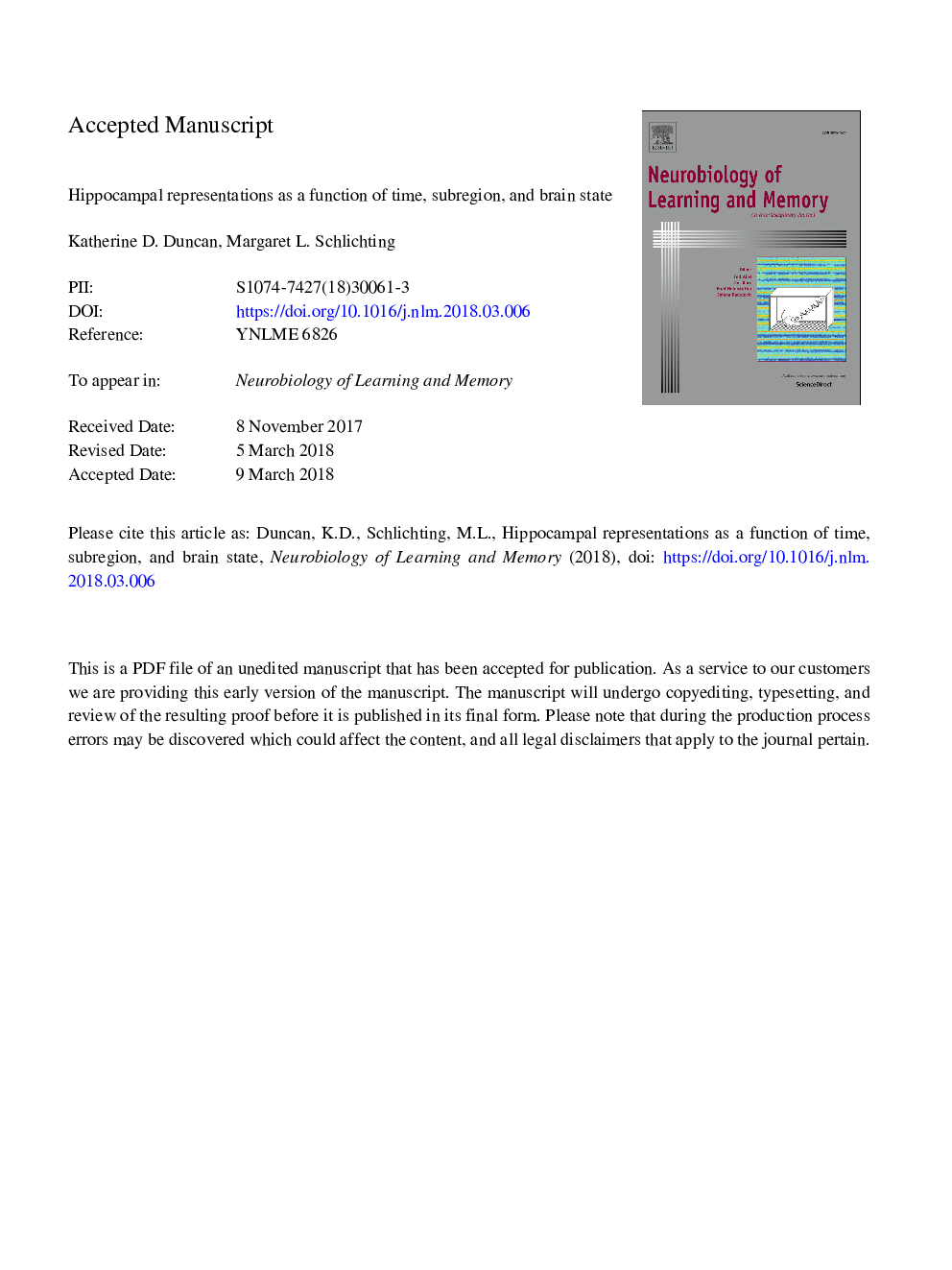| Article ID | Journal | Published Year | Pages | File Type |
|---|---|---|---|---|
| 7298744 | Neurobiology of Learning and Memory | 2018 | 50 Pages |
Abstract
How does the hippocampus represent interrelated experiences in memory? We review prominent yet seemingly contradictory theoretical perspectives, which propose that the hippocampus distorts experiential representations to either emphasize their distinctiveness or highlight common elements. These fundamentally different kinds of memory representations may be instantiated in the brain via conjunctive separated codes and adaptively differentiated codes on the one hand, or integrated relational codes on the other. After reviewing empirical support for these different coding schemes within the hippocampus, we outline two organizing principles which may explain the conflicting findings in the literature. First focusing on where the memories are formed and stored, we argue that distinct hippocampal regions represent experiences at multiple levels of abstraction and may transmit them to distinct cortical networks. Then focusing on when memories are formed, we identify several factors that can open and maintain specialized time windows, during which the very same hippocampal network is biased toward one coding scheme over the others. Specifically, we discuss evidence for (1) excitability-mediated integration windows, maintained by persistently elevated CREB levels following encoding of a specific memory, (2) fleeting cholinergically-mediated windows favoring memory separation, and (3) sustained dopaminergically-mediated windows favoring memory integration. By presenting a broad overview of different hippocampal coding schemes across species, we hope to inspire future empirical and modeling research to consider how factors surrounding memory formation shape the representations in which they are stored.
Keywords
Related Topics
Life Sciences
Neuroscience
Behavioral Neuroscience
Authors
Katherine D. Duncan, Margaret L. Schlichting,
